Sound Like an Expert: 7 Electric-Car Terms You Need to Know
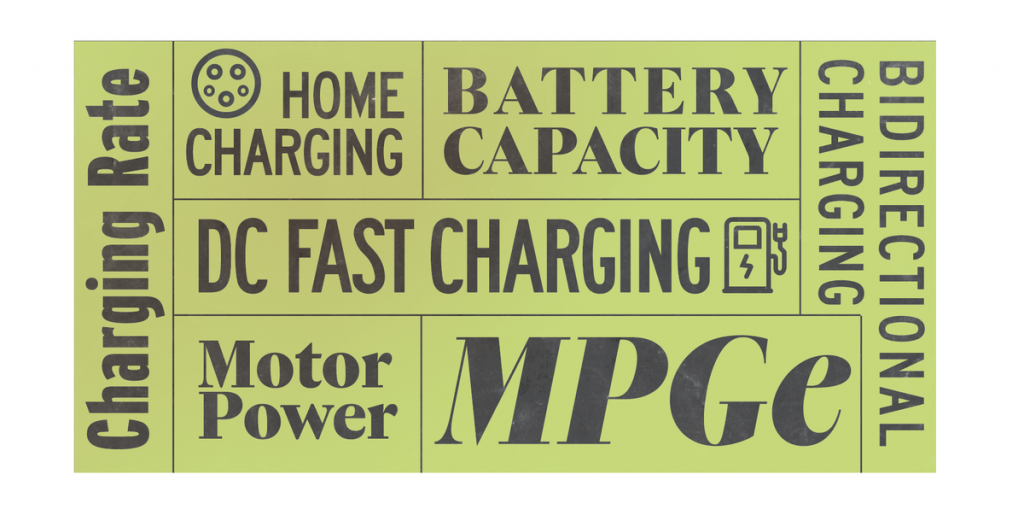
The world of automobiles is being turned upside down by the onslaught of electric vehicles currently hitting the market. Internal-combustion-powered cars and trucks have been around for 120 years; they’re old school and well understood. But the arrival of EVs and their new-school technologies has spawned an entirely new class of vehicular jargon. We want you to be fluent in it. We’re here to help with this mini-glossary of seven EV tech terms. Master them and you’ll sound smart—and be smart—about these newfangled battery-powered conveyances.
gopixaGetty Images
Motor Power
In North America, many carmakers quote the power of electric motors in horsepower, as they do for internal-combustion engines; however, motor power is also often expressed in kilowatts. One kilowatt equals 1.34 horsepower. So if you see an EV motor that’s rated in kW, add one-third to that number and you’ll know almost exactly how much horsepower it has.

Thomas-SoellnerGetty Images
Battery Capacity
The battery that powers an electric vehicle contains energy, which is measured in kilowatt-hours. If that unit sounds familiar, it’s probably because it’s the same one used by your utility provider to bill you for your home’s electrical usage. For reference, one gallon of gasoline contains 33.7 kWh of energy.
Battery capacity in kWh is the time in hours over which a battery can output power in kilowatts. For instance, smaller EVs with 200 miles or so of range often have batteries of around 60 kWh. That means they can provide 30 kW (or about 40 horsepower) for two hours straight. That may not sound like a lot, but EVs traveling at a steady speed usually require just a fraction of that power, and some of the energy used to accelerate the vehicle and overcome aerodynamic and road-load drag can be recaptured through regenerative braking. There are two variations of battery capacity you may encounter: we quote “usable” capacity, the amount the car can actually draw on, while some automakers quote total or “gross” capacity, which includes buffers that prevent the battery from discharging completely to zero.

SolStockGetty Images
Home Charging
Today, by far the majority of electric-car miles come from batteries charged either at home or at work. There are two kinds of home charging. The first, called Level 1, uses a standard 120-volt wall outlet; the second, called Level 2, employs a more powerful 240-volt circuit akin to that required to run an electric stove or clothes dryer.
Owners who need to replenish more than 30 or 40 miles of range each day should install dedicated Level 2 charging equipment with its own charging cord in or on their garage. Level 2 systems generally recharge EV batteries about six to almost 20 times faster than a Level 1 hookup, depending on the output of the circuit and what the car can accept. Those drivers covering fewer than 30 miles daily can get by using a 120-volt outlet and the portable 120-volt charging cord that comes with the car. Some makers now provide charging cords with swappable pigtails that allow them to charge from both 120- and 240-volt outlets. Finally, public charging stations, the kind you might encounter in a parking garage or mall parking lot, operated by networks such as ChargePoint, mostly charge at Level 2.
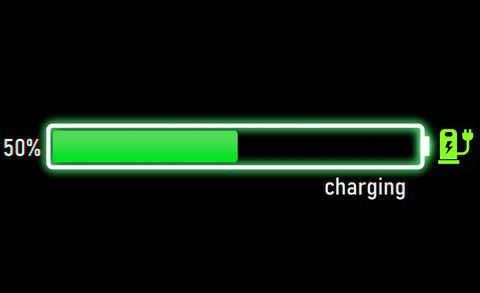
Ashish kambleGetty Images
DC Fast Charging
While Level 1 or 2 charging uses alternating current (AC) from a building’s electrical wiring, the quickest type of charging is known as DC fast charging. This is not something you would install at your house; it’s intended to support EVs for long-distance travel and is usually found at charging stations in highway travel plazas or near major intersections.
Note also that fast charging is usually most productive between about 5 and 80 percent state of charge for the battery, because—like your mobile phone—the charging rate slows as the battery nears full, and juicing up that last 20 percent takes relatively much longer.
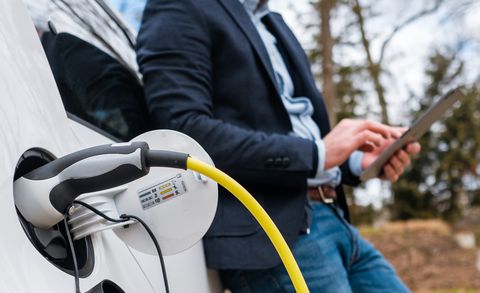
Volodymyr KalyniukGetty Images
Charging Rate
The rate at which an EV can recharge is also measured in kilowatts. AC charging (Level 1 and Level 2) runs from about 1.0 to 19.2 kW, depending on what power level the car’s built-in electronics can accept and what the charging hardware can provide. DC fast-charging rates vary even more, from a now-obsolete standard of 24 kW to the fastest offered for passenger cars, which goes as high as 350 kW. The actual rate at which an EV charges always depends on battery energy remaining, battery temperature, and other factors.
The moral of the story is to know what rate your EV can take and match it to an appropriate charging station via the car’s navigation system, where possible, or the various apps for route planning and charging-station location. These include Plugshare, Chargeway, A Better Route Planner, and others.
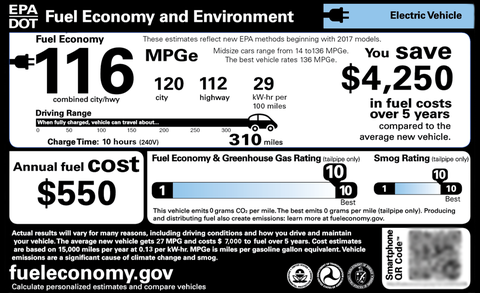
Car and Driver
MPGe
Miles Per Gallon Equivalent, or MPGe, is a measure of how far a vehicle can travel on the energy contained in one gallon of gasoline. It’s the EV efficiency measure cited by the EPA, intended to provide a comparison to how the agency rates the fuel-efficiency of fossil-fuel cars in mpg. The mpg number appears on the window sticker and in Car and Driver specification tables.
In practice, though, the most important EV metric for EV drivers is range: Can my car take me to where I’m going and back on a single charge, given weather and speed conditions? When EV owners do discuss EV “efficiency,” they actually tend to be talking about consumption—the rate of energy used when driving the vehicle—which is typically expressed in watt-hours per mile (Wh/mi) or its inverse miles per kilowatt-hour (mi/kWh). True efficiency, which is what the EPA’s MPGe figures are, also includes charging losses and the inevitable battery drain that happens when the vehicle is parked. For a more complete explanation of this topic, check out our explainer here.
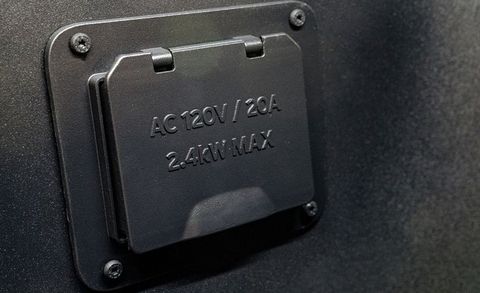
Car and Driver
Bidirectional Charging
Also called “power out” or “vehicle to load” (V2L), bidirectional charging is shaping up as another selling point for EVs, one that most gasoline vehicles can’t offer. It is the ability to export electricity from their battery packs via 120-volt or 240-volt outlets built into the car. The power output is generally 1.9 to 9.6 kW.
These outlets can be used to operate anything from portable refrigerators or boomboxes at outdoor events to power tools used onsite by construction crews. In this use, the EV stands in for a loud, exhaust-spewing gasoline generator. They can also be used to charge a stranded EV.
Some EVs can be used as generator replacements to power homes in the event of a blackout, after suitable hardware is added to the home’s wiring. This capability was first demonstrated in March 2011, after Japan’s tsunami and nuclear catastrophe, when EVs were used to power medical equipment in field hospitals.
This content is created and maintained by a third party, and imported onto this page to help users provide their email addresses. You may be able to find more information about this and similar content at piano.io





